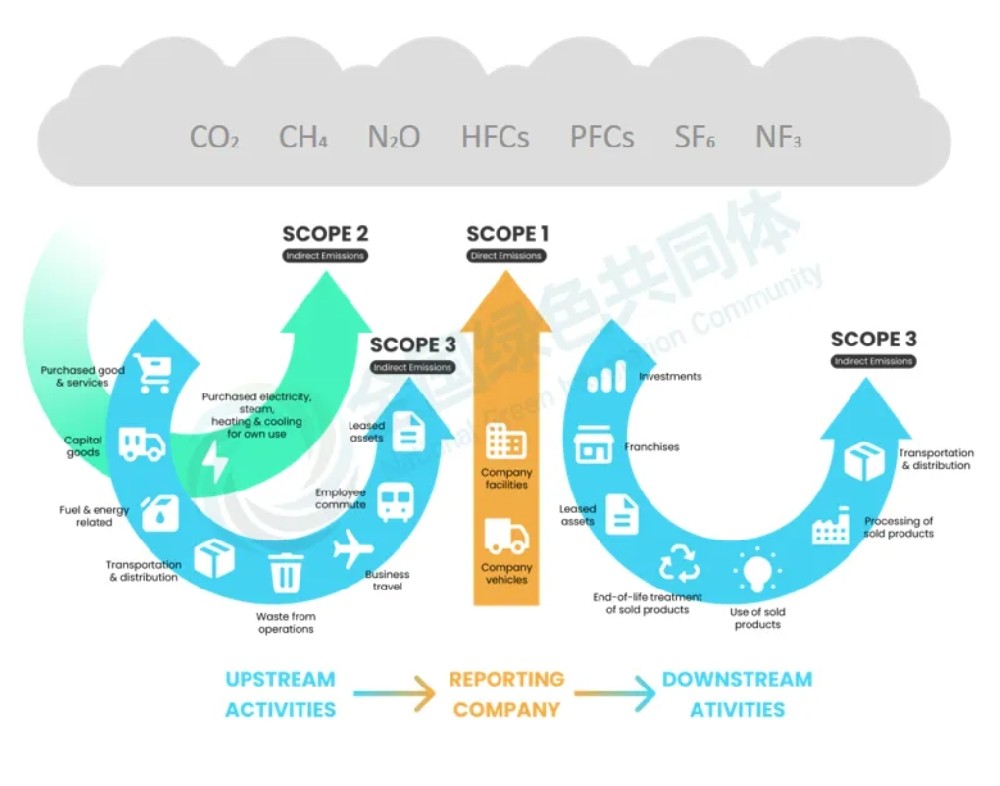NAOMI ORESKES
来源:钛视界
CCS碳捕捉封存——皇帝的新衣。

碳捕获作为气候解决方案的虚假承诺
化石燃料公司利用捕获的二氧化碳来提取更多化石燃料,导致大气中二氧化碳净增加
去年十二月,在迪拜举行的联合国气候变化大会(COP28)的领导者宣布取得胜利,与会各方同意“逐步淘汰”化石燃料。但是,当各国试图确定什么算作过渡时,一个大问题将依然存在争议:所谓的不受限制的化石燃料使用。协议中的一项内容是呼吁“加速向不受限制的煤电减排过渡”。
在这里,减排指的是碳捕获和储存(CCS)。其想法是我们可以继续使用化石燃料,只要排放的二氧化碳被捕获并储存在地下。在美国,石油和天然气行业一直在推动这种方法,作为解决气候危机的关键解决方案之一。但这有多现实呢?
让我们先来看一些事实。石油是粘稠的物质,当你试图从油藏中抽油时,大部分石油被留在了后面,粘在岩石上。但如果你用水、洗涤剂或气体(如二氧化碳)淹没油田,你可以冲出大部分剩余的石油。这种技术被称为提高石油回收率,它已经是行业标准做法很长时间了。据美国能源部表示,气体注入占美国提高石油回收率的一半以上,并且已经帮助那些本来现在可能已经耗尽的油田增加了数十年的寿命。同样的方法也用于气田,以保持压力使天然气持续流动。
近年来,石油工业试图将这种老方法包装成新瓶,将其描述为缓解气候变化的方法,因为一些注入的二氧化碳可能会最终进入大气。理论上,这是一个好主意。但实践中,存在很大问题。
众所周知,凡是上升的都必须下来,反之亦然(至少对于液体或气体而言),因为流体能够通过即使是最坚硬岩石中也存在的微小孔隙和裂缝迁移。在美国政府花费数十亿美元评估位于内华达州的潜在民用核废料处理场地尤卡山后,该提案部分原因是失败的,因为科学家们无法保证废料会就地不动。那些废料主要是固体和液体混合物。我们为阻止气候变化而需要储存的二氧化碳废物将是一种浮力大、粘度低的“超临界”流体,即在如此高的温度和压力下维持,以至于不存在明显的气体和液体阶段。像所有流体一样,它有能力通过地面迁移,并找到回到地表的路径,从那里进入大气。
包括我在内的许多地质学家相信,地球上有些地方可以安全实现长期储存二氧化碳,但这需要科学家所说的“场地特征研究”。这意味着需要对位置进行足够详细的研究,以确信放置在那里的东西会留在那里。例如,美国目前在新墨西哥的低渗透率盐层中储存军事放射性废料,并且在北达科他州有许多待决议的提案,计划在低渗透率页岩覆盖的砂岩中储存二氧化碳。
但场地特征研究需要时间,而我们没有这个时间。能源部花了20多年时间评估尤卡山,在新墨西哥的场地研究了大约14年。政府间气候变化专门委员会在2018年得出结论,我们只有到2030年才能阻止不可逆转的气候破坏,因此我们迫切需要专注于现在就能实施的解决方案。
我们可以通过扩大现有的碳捕获和储存站点来快速启动该项目。正如麻省理工学院教授查尔斯·哈维和企业家库尔特·豪斯所解释的,问题是美国几乎所有的CCS项目实际上都是增强回收项目,它们保持石油和天然气的流动,并且每卖出一桶新石油和每燃烧一立方英尺的天然气都会向大气中排放更多的二氧化碳。所以这些项目不仅没有帮助,而且在历史上的一个关键时刻,当我们需要做的恰恰相反时,它们却在延续我们对化石燃料的使用。
尽管美国政府已经在失败的CCS项目上花费了数十亿美元,但根据《通胀削减法案》(IRA),它将花费更多的数十亿美元,其中很大一部分是以税收补贴形式给化石燃料公司的。理论上,IRA的税收抵免应该用于“安全”的碳储存,但确保二氧化碳不会重新泄漏回大气的机制充其量是脆弱的。更糟的是:环境保护署得出结论,如果CCS的价格下降——例如由于税收抵免或规模经济——一些目前关闭的油田或天然气田可能会重新开放。
还有另一种CCS模式:冰岛的Orca工厂,那里将二氧化碳直接从空气中取出并溶解在水中,然后与玄武岩反应——这种岩石组成了冰岛和海底地面——形成稳定的碳酸盐矿物。但这个过程的成本极高:每吨捕获的二氧化碳需要1200美元。(比尔·盖茨为微软谈判了一笔“仅”600美元/吨的大宗交易。)美国每年产生约6000百万吨二氧化碳。为了简化计算,如果我们假设每吨成本为1000美元,那么抵消美国排放量将每年花费大约6万亿美元。随着时间的推移,这些成本可能会降低,但我们没有时间了。
据说,有人曾问圣雄甘地对西方文明有何看法。他回答说:“这将是一个好主意。”关于作为解决气候危机的方案的碳捕获和储存也可以这么说。虽然它可能在未来成为解决方案的一部分,但现在它大多是一个危险的分心。我们的焦点和税收美元应该集中在尽可能快地扩大成本竞争力的可再生能源生产、大规模电网电池储能以及节能措施上。
作者:NAOMI ORESKES
哈佛大学科学史教授。她是《为什么信任科学?》(普林斯顿大学出版社,2019年)的作者以及《大神话》(布鲁姆斯伯里出版社,2023年)的合著者。

《科学美国人》杂志 第330卷 第3期
本文最初以《碳捕捉的虚假承诺》为标题发表在《科学美国人》杂志上。
原文:
The False Promise of Carbon Capture as a Climate Solution
Fossil-fuel companies use captured carbon dioxide to extract more fossil fuels, leading to a net increase in atmospheric CO2
Last December the leaders of the United Nations Climate Change Conference (COP28) in Dubai declared victory as the parties agreed to “transition away” from fossil fuels. But there's a big issue that will remain contentious as countries try to define what counts as a transition: so-called unabated fossil-fuel use. Among its provisions, the agreement called for “accelerating efforts towards the phase-down of unabated coal power.”
Abatement in this context means carbon capture and storage (CCS). It's the idea that we can still use fossil fuels as long as the carbon dioxide emitted is captured and stored in the ground. In the U.S., the oil and gas industries have been pushing this approach as one of the key solutions to the climate crisis. But how realistic is it?
Let's start with a few facts. Oil is sticky stuff, and when you try to pump it out of a reservoir, most of it gets left behind, stuck to the rocks. But if you flood a field with water, detergents or gas (such as CO2), you can flush out much of the remaining oil. This technique is known as enhanced oil recovery, and it's been standard industry practice for a long time. According to the U.S. Department of Energy, gas injection accounts for more than half of the enhanced oil recovery in the U.S. and has helped to add decades of life to fields that would otherwise by now have run dry. The same approach is used in gas fields to maintain the pressure that keeps the gas flowing.
In recent years the oil industry has tried to pour this old wine into new bottles, casting the practice as a method of mitigating climate change because some of the injected CO2 might otherwise end up in the atmosphere. In theory, it's a good idea. In practice, there are big problems.
We all know the saying that what goes up must come down, but the opposite is largely true, too (at least if the materials involved are liquid or gas), because fluids migrate through the microscopic holes and fractures that are found in even the most solid of rocks. After the U.S. government spent billions evaluating a potential civilian nuclear waste disposal site at Yucca Mountain in Nevada, the proposal failed in part because scientists could not guarantee that the waste would stay put. That waste was mostly a mix of solids and liquids. The waste CO2 that we would be storing to stop climate change would be a buoyant, low-viscosity “supercritical” fluid—that is, a fluid maintained at such a high temperature and pressure that distinct gas and liquid phases do not exist. Like all fluids, it would have the capacity to migrate through the ground and find its way back to the surface and, from there, the atmosphere.
Many geologists (myself included) believe there are places on Earth where long-term CO2 storage could be safely achieved, but it would require what scientists call “site characterization.” That means studying the location in enough detail to be confident that things put there will stay there. For example, the U.S. currently stores military radioactive waste in low-permeability salt formations in New Mexico, and there are numerous pending proposals to store CO2 in sandstones overlain by low-permeability shales in North Dakota.
But site characterization takes time that we don't have. The DOE spent more than 20 years evaluating Yucca Mountain. It spent some 14 years studying the New Mexico site. The Intergovernmental Panel on Climate Change concluded in 2018 that we have only until 2030 to stop irreversible climate damage, so it's urgent that we focus our attention on solutions that can be implemented right now.
We could jump-start the project by expanding existing carbon capture and storage sites. The problem, as Massachusetts Institute of Technology professor Charles Harvey and entrepreneur Kurt House have explained, is that nearly all CCS projects in the U.S. are actually enhanced-recovery projects that keep the oil and gas flowing, and every new barrel of oil and cubic foot of gas sold and burned is putting more CO2 into the atmosphere. So not only do these kinds of projects not help, but they perpetuate our use of fossil fuels at a critical moment in history when we need to do the opposite.
Despite the U.S. government having spent billions on failed CCS projects, under the Inflation Reduction Act (IRA), it is set to spend many billions more, a lot of it in tax subsidies to fossil-fuel companies. In theory, IRA tax credits are to be used for “secure” carbon storage, but the mechanisms for ensuring that CO2 is not leaking back into the atmosphere are flimsy at best. And it gets worse: the Environmental Protection Agency has concluded that if the price of CCS falls—because of tax credits, for example, or economies of scale—some currently closed oil or gas fields might reopen.
There is another model for CCS: the Orca plant in Iceland, where CO2 is taken directly from the air and dissolved in water, which then reacts with basalt—the rock that makes up both Iceland and the ocean floor—to create stable carbonate minerals. But it's wildly expensive: $1,200 per metric ton of captured CO2. (Bill Gates has negotiated a bulk deal for Microsoft at “only” $600 per ton.) The U.S. produces about 6,000 million metric tons of CO2 per year. If for ease of arithmetic we assume a cost of $1,000 per ton, then offsetting U.S. emissions would cost about $6 trillion every year. In time these costs will probably come down, but time is what we don't have.
It is said that Mahatma Gandhi was once asked what he thought of Western civilization. He replied, “It would be a good idea.” The same could be said about carbon capture and storage as a solution to the climate crisis. Although it might be part of the solution down the road, right now it's mostly a dangerous distraction. Our focus—and our tax dollars—should be trained on scaling up production of cost-competitive renewable energy, grid-scale batteries for storing that energy and efficiency measures to conserve it as fast as we possibly can.
特别声明:本网站转载的所有内容,均已署名来源与作者,版权归原作者所有,若有侵权,请联系我们删除。凡来源注明低碳网的内容为低碳网原创,转载需注明来源。
-
1
-
2
-
3
-
4
-
5
-
6
-
7
-
8
-
9














